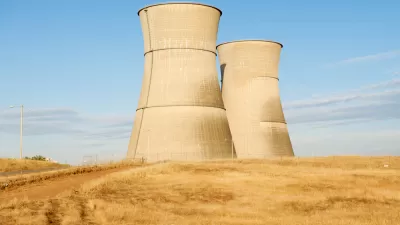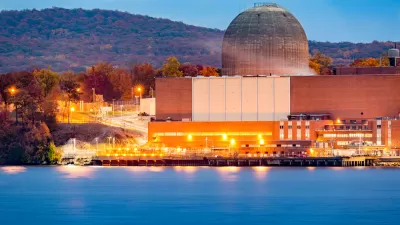Shutting down one form of clean energy with plans to replace it with another keeps us running in place, or worse, falling behind on decarbonization goals.

As California winds down production of nuclear energy at the Diablo Canyon plant, "[t]he California Public Utilities Commission (CPUC) voted on June 24th to approve a procurement package composed of 11.5 GW of clean energy resources that will come online by 2026." But Adam Stein argues that replacing the nuclear plant with other clean energy sources is tantamount to running in place–or worse. "In the approved procurement order the CPUC made its position clear that building new fossil fuels resources is the best option — they have just postponed it until after further analysis is completed to justify this position."
This, Stein says, "would not be necessary if the older and less efficient fossil-fueled generators were replaced with renewables instead of replacing a clean firm source like Diablo." According to Stein, "[n]one of the resources proposed to replace Diablo Canyon are as resilient to extreme weather — not even gas or geothermal. The once-through cooling system from the ocean is heat and drought resistant. The long fuel cycle lets the power plant ride out any storm without concern for fuel security."
Stein calls this replacement "treadmill decarbonization," writing that "[i]nstead of moving toward a cleaner and lower-carbon energy system, treadmill decarbonization just runs in place by swapping one clean energy source for another." This also hurts ratepayers: "Just for the closure of Diablo Canyon, ratepayers will have to shoulder $437 million in the form of higher electricity prices to support the local economy, community support programs, and more than 1,300 lost jobs. Instead of paying almost half a billion dollars to force clean energy off the grid, that investment could have gone to building more clean energy."
FULL STORY: Treadmill Decarbonization Doesn’t Help

Alabama: Trump Terminates Settlements for Black Communities Harmed By Raw Sewage
Trump deemed the landmark civil rights agreement “illegal DEI and environmental justice policy.”

Planetizen Federal Action Tracker
A weekly monitor of how Trump’s orders and actions are impacting planners and planning in America.

The 120 Year Old Tiny Home Villages That Sheltered San Francisco’s Earthquake Refugees
More than a century ago, San Francisco mobilized to house thousands of residents displaced by the 1906 earthquake. Could their strategy offer a model for the present?

Ken Jennings Launches Transit Web Series
The Jeopardy champ wants you to ride public transit.

BLM To Rescind Public Lands Rule
The change will downgrade conservation, once again putting federal land at risk for mining and other extractive uses.

Indy Neighborhood Group Builds Temporary Multi-Use Path
Community members, aided in part by funding from the city, repurposed a vehicle lane to create a protected bike and pedestrian path for the summer season.
Urban Design for Planners 1: Software Tools
This six-course series explores essential urban design concepts using open source software and equips planners with the tools they need to participate fully in the urban design process.
Planning for Universal Design
Learn the tools for implementing Universal Design in planning regulations.
Clanton & Associates, Inc.
Jessamine County Fiscal Court
Institute for Housing and Urban Development Studies (IHS)
City of Grandview
Harvard GSD Executive Education
Toledo-Lucas County Plan Commissions
Salt Lake City
NYU Wagner Graduate School of Public Service




























